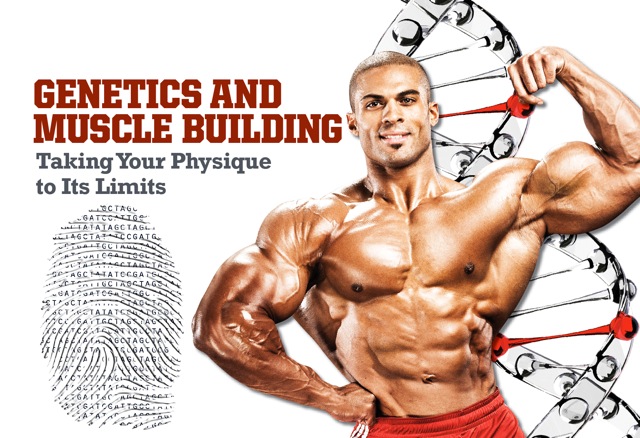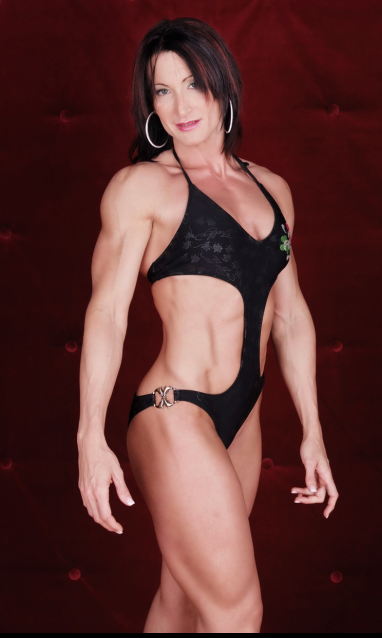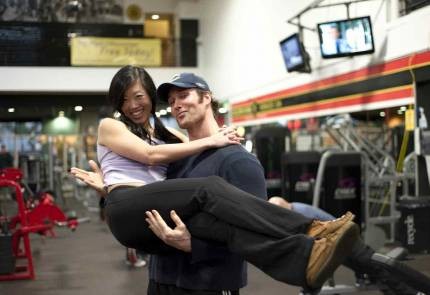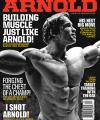Genetics and Muscle Building

GENETICS AND MUSCLE BUILDING: Taking Your Physique to Its Limits
I’ve actually talked to young bodybuilders and other athletes who didn’t seem particularly gifted with impressive physical structure, but who looked at photos of monstrously huge Mr. Olympia competitors and declared, “Someday I’m going to have a physique like that!” When they were apprised of the fact that their genetics might not allow them to develop a 16-inch arm into one measuring an impressive 21 inches or more, they were usually undeterred. “I don’t believe in genetics” is a common response. “I’ll just work harder.”
Enthusiasm and determination are great qualities in any athlete. But genetics can’t be ignored. In fact, if you don’t believe in genetics, try getting taller!

Your genes are the blueprint your body uses to guide it as it grows and develops. Your genetics comprise the sum total of the DNA you inherited from your parents. This DNA defines the nature and behaviour of every cell in your body.
Your genes dictate physical limits—whether you’re intended to be male or female, short or tall, with fair skin or dark. But how you actually end up involves a combination of your genetics, your behaviour, and your environment. Your genes determine the most you can be, but given certain experiences, you can end up as much less.
Until genetic engineering is much further advanced, there’s nothing you can do to alter your genetic inheritance. However, you can work to change the expression of your genes. And more about that below.
First, let’s look at some of the different ways that genetics is important to bodybuilders.
• Your skeletal structure: How tall or short are you? How wide are your shoulders? How long are your legs? Are you big-boned or the opposite? Is there much space between your rib cage and pelvis? How wide are your hips? Do you have a naturally small waist or a narrow one? How long is your neck?
• Your muscles: How many muscle cells do you have? What type are they (fast or slow twitch)? Are you basically mesomorphic, endomorphic, or ectomorphic? Do you build muscle very quickly, or is this a slow process? Are your muscles evenly distributed around your body, or are you lacking some body parts? What about muscle length and attachments—do you have short biceps, no biceps peak, high calves? Do your quadriceps naturally flare? Do you have impressive abs when you’re in shape?

• Fat distribution: Do you carry a lot of body fat or a little? That is, how many fat cells do you have? Is that fat evenly distributed, or does it bunch up in certain areas? When you diet, do you lose fat evenly, or do pockets of adipose tissue remain?
"Each person has a different number of body fat cells located in greater or lesser numbers in various anatomical places. Our true shape would be self-evident, and the only other determining factor as to how we could look aesthetically would be the size and shape of our muscles. It is the size of the fat cells in between the skin and our muscles that determines our actual body shape." - John Cardillo, Canada's Premier Fitness Expert & Champion Bodybuilder
• Metabolism: Do you burn off fat quickly or slowly? Are you able to diet successfully eating relatively high calories, or do you need to seriously restrict your food intake?
• Psychology: Are you naturally motivated to train and diet, or does this take a lot of effort for you? Are you able to live a very regulated life, consistent, pretty much eating, training, and sleeping on the same schedule for months at a time? Are you obsessive-compulsive enough to live this kind of life? And when you compete, does the pressure of competition get your juices flowing and excite you, or do you stress out, make mistakes, and fail to do your best?
Look at musclebuilding in terms of children’s balloons. There are round balloons and long, cylindrical balloons. You can make each type of balloon much bigger by inflating them. But no matter how hard you try, the round balloon will never turn into a cylindrical one, or vice versa.

In the same regard, a tall athlete with long proportions such as Mike O’Hearn is never going to have the same illusion of mass of a Phil Heath. Nor will Phil Heath be able to change his massive body into the kind of aesthetic sculpture that has made O’Hearn one of the most popular physique models. Genetics cannot be ignored. Shaquille O’Neal never had to decide whether to play basketball or become a jockey.

But although genetics sets ultimate limits, it doesn’t totally dictate results. Musclebuilding is all about using resistance training and diet to achieve maximum aesthetic development of any physique. The whole point is to achieve as much as you can in building and shaping your own body. And often, you are capable of much more than you think you are.
One of the most famous examples of this in bodybuilding history is Franco Columbu. Arnold Schwarzenegger has said that, knowing Franco as a boxer and powerlifter, he seemed the least likely candidate to become a champion bodybuilder. And yet Franco Columbu went on to win two Mr. Olympia titles. Just as in other sports, bodybuilding is full of stories of competitors who never thought they had the talent to rise to the top but who worked hard and became successful nonetheless.

Of course, you should keep in mind that bodybuilding is not just about top IFBB pros. There are other pro competitions, national and international amateur contests, and plenty of events held on the regional, provincial or local level. Sports competition is about challenging yourself to achieve your best—at whatever level at which you’re competitive. Winning the Mr. Sudbury overall title can be every bit as challenging and satisfying to the victor as taking a grand prix title. And the amount of effort and dedication to achieve this can be every bit as demanding.
Again, a lot of this comes down to genetics. Some individuals are simply designed to be more successful at any given sport—although the higher the level of competition, the more important hard and consistent work over time becomes. Just as in the story of the tortoise and the hare, having more ability can mean nothing if you don’t do the work required.
And hard work over time has another benefit. As I said above, you can’t change your genetic inheritance. But you can change the way that genetics expresses itself—how it works. All genes are not equal. We all have what are called master genes, which dictate which of your other genes are turned on and which aren’t. When you do intense bodybuilding training over time, this can change how your genes function, turning on more of the genes that allow for muscle mass and strength and turning off others. Your genetic expression adapts to your experience, to what happens to you, to what you do.
You can, in effect, train your genes to help you create more of the kind of physique you are working toward.
So it’s still a fact that your genes determine the limits of your physical ability and development. They’re an absolute wall. But it’s usually difficult to know for certain what that limit is. Because of genetic expression, you may be capable of more development and achievement than you think. At some point, no matter how hard you try, you’re going to find that limit. But until you make the effort and put in the time, you won’t know where that limit lies.
EDITOR’S NOTE: A British research team has developed a breakthrough method of testing an athlete’s genetics to determine exactly what diet and training regimen is best suited for his or her exact genetic makeup. It’s called Muscle Genes, and it’s going to revolutionize the way bodybuilders and other athletes build muscle. Top athletes such as 8-time Mr. Olympia Ronnie Coleman and IFBB pro Johnnie Jackson have already had their genetics tested by the Muscle Gene scientists. For more info, visit MuscleGenes.com.

